9.4 Perineum Anatomy and Functions
Male & Female Perineum
Anatomy of male and female perineum includes various structures pertinent to urogenital functions.
Diagrams and diverse labeled structures are crucial for understanding anatomy.
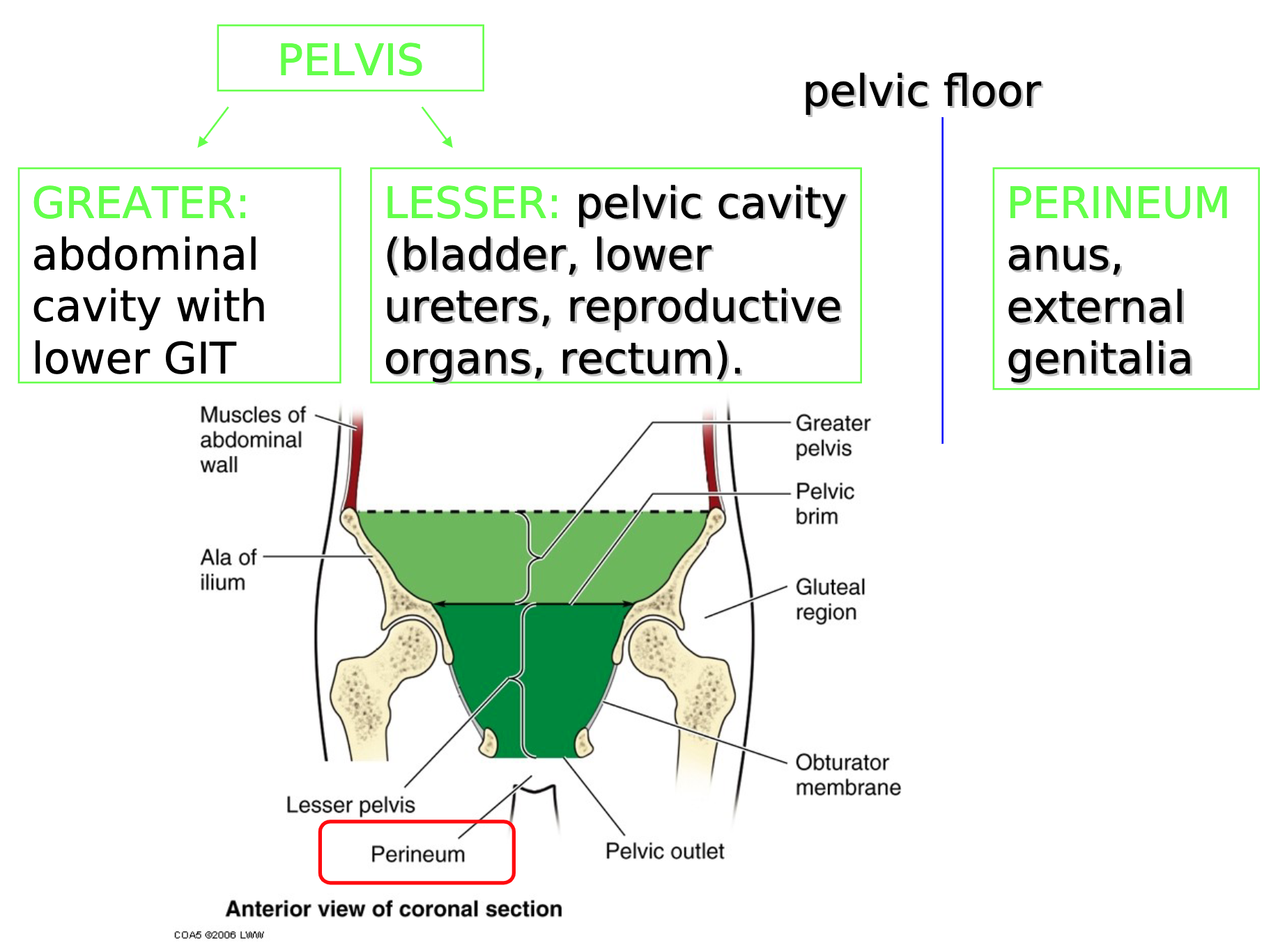
Pelvis and Perineum
Greater Pelvis: Contains abdominal cavity, lower gastrointestinal tract.
Lesser Pelvis: Pelvic cavity housing bladder, lower ureters, reproductive organs, and rectum.
Perineum: anus, external genetalia
Divisions of the Pelvis and Perineum
Determined by bony landmarks (iliac alae and pelvic inlet).
Contents of perineum are separated from the true pelvis by pelvic diaphragm and fascial layers.
False Pelvis Components: Ileum, cecum, appendix, sigmoid colon.
True Pelvis Components: Distal ureters, urinary bladder, rectum, female (vagina, uterus), male (ductus deferens/prostate).
PERINEUM in both genders
• Pubic symphysis (ant) to coccyx (post)
– transverse line between ischial tuberosities
• urogenital triangle – “closed” by fascia
• anal triangle
• perineal body (centre point)
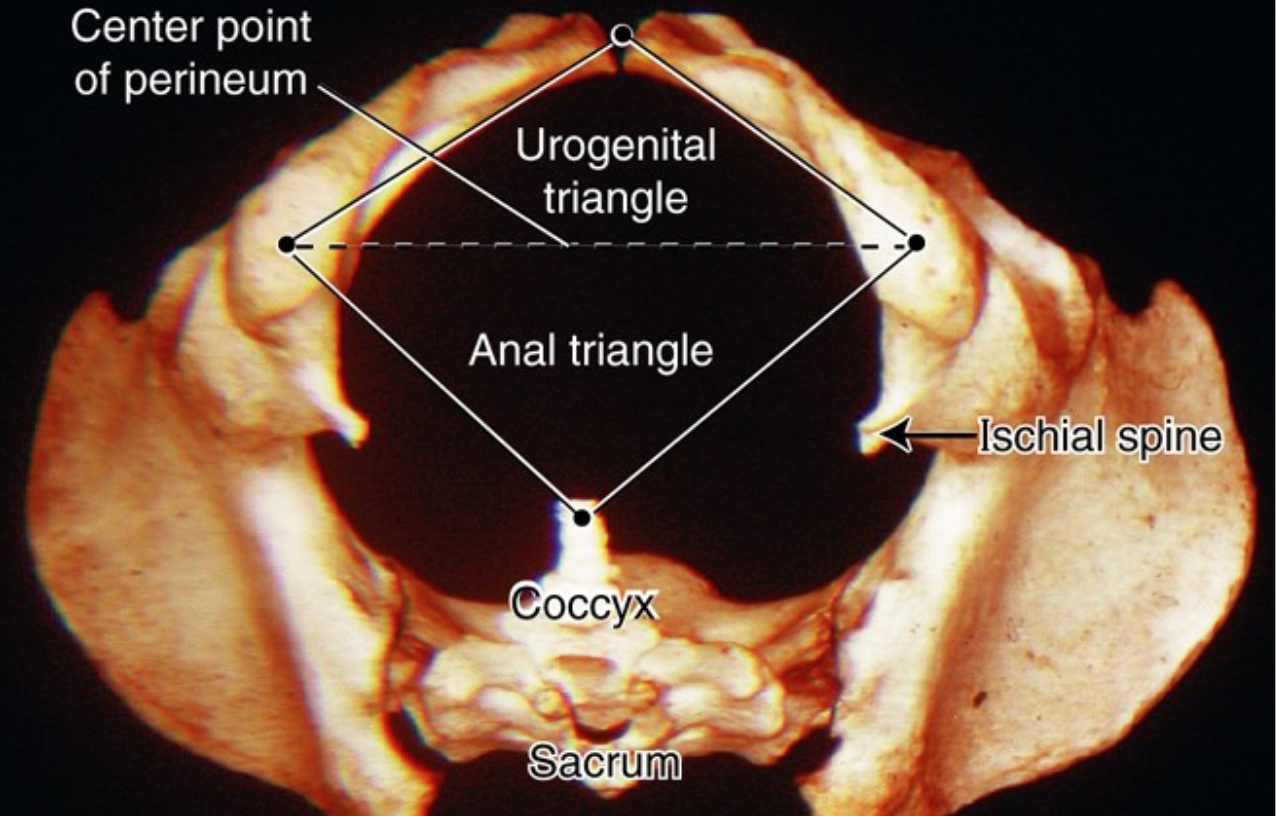
Deep and Superficial Perineal Pouches
Deep Pouch: Contains perineal membrane, pelvic diaphragm, and structures crossing the diaphragm.
Superficial Pouch: Contains ischiocavernosus & bulbospongiosus muscles; aids in erectile function.
Muscles of Deep and Superficial Perineal Pouches support the perineal body and pelvic floor muscles
Muscles of the Pelvic Floor and Perineum
Levator Ani: Supports pelvic organ position and assists in defecation. (Perineal membrane and deep and superficial perineal pouch)
Coccygeus: Forms the posterior part of pelvic diaphragm.
Perineal Muscles: Important for support and stability; includes external urethral sphincter, deep/superficial transverse perineal muscles, bulbospongiosus.
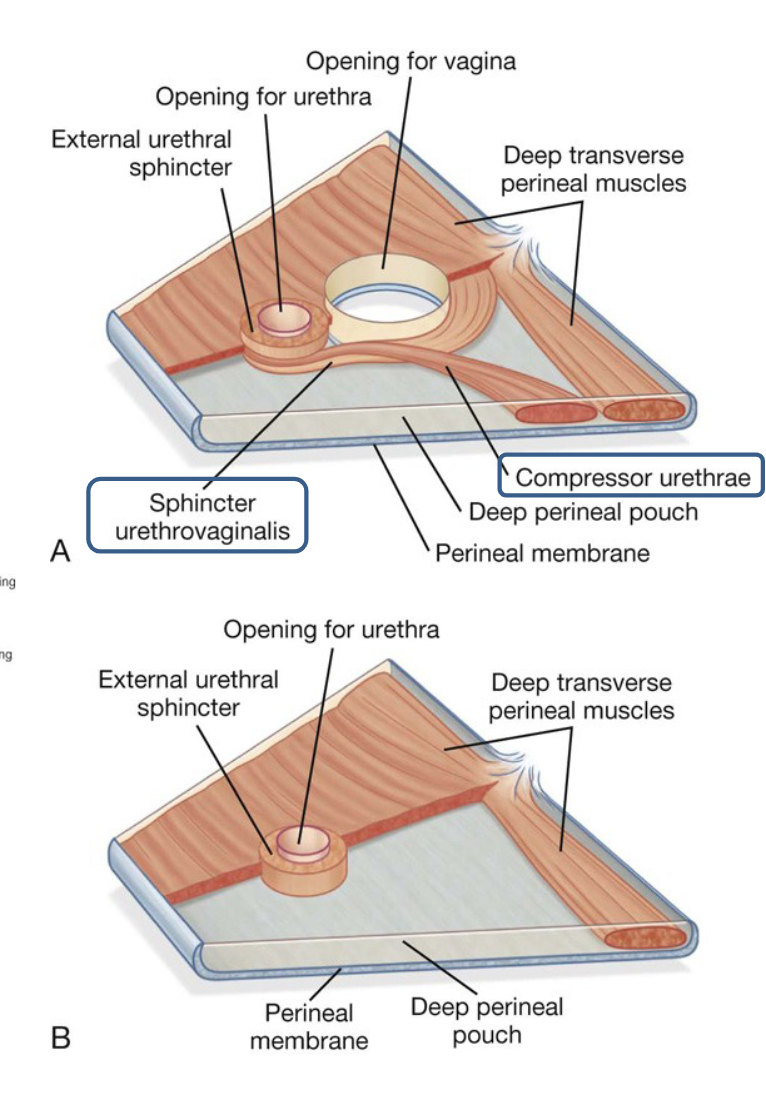
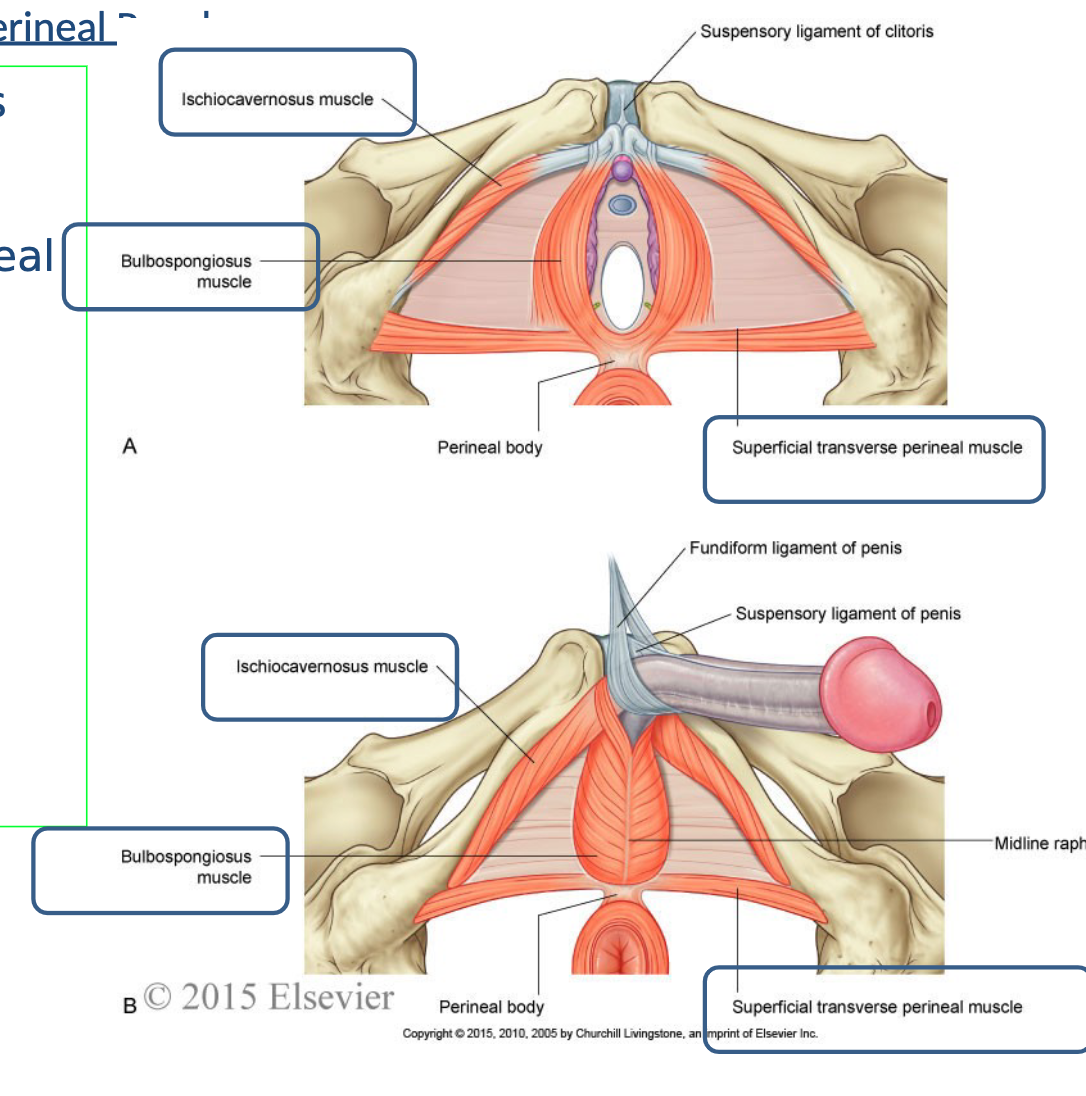
Perineal Blood Supply and Innervation
Blood Supply: Branches from internal iliac arteries and femoral arteries (e.g., pudendal artery).
Venous Drainage: Tributaries leading to internal iliac veins
Nerve Supply:
Pudendal Nerve: Somatic innervation (L1-S4).
Parasympathetic Nerves: Responsible for erection (S2-S4) somatic
Sympathetic Nerves: Control ejaculation and thermoregulation (L1-L2).
Lymphatic drainage: iliac nodes, inguinal nodes
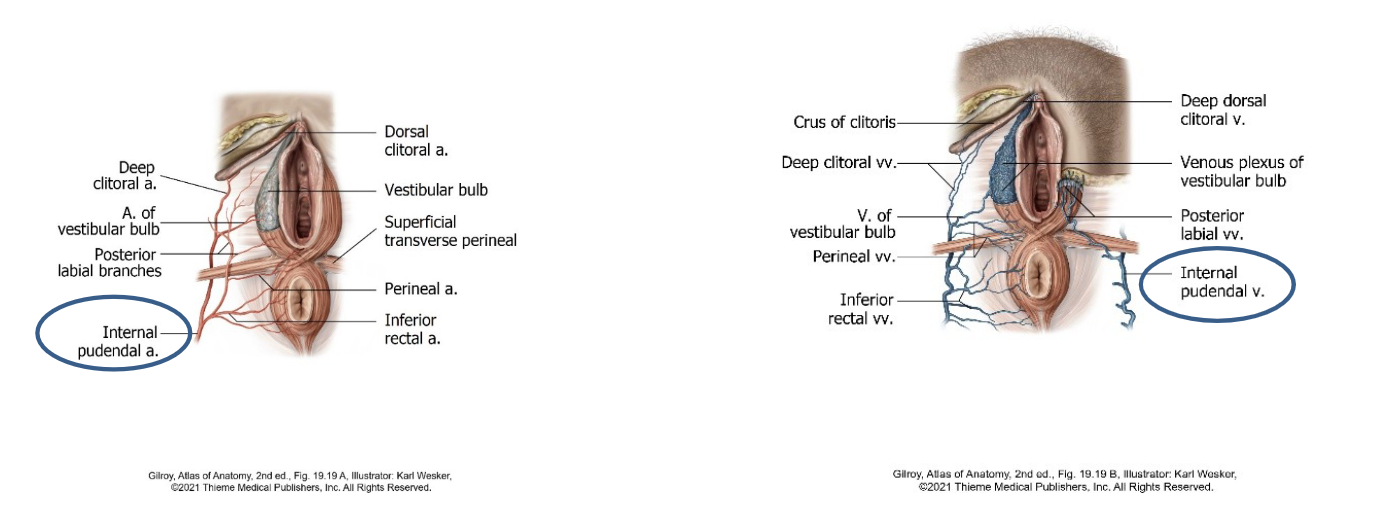
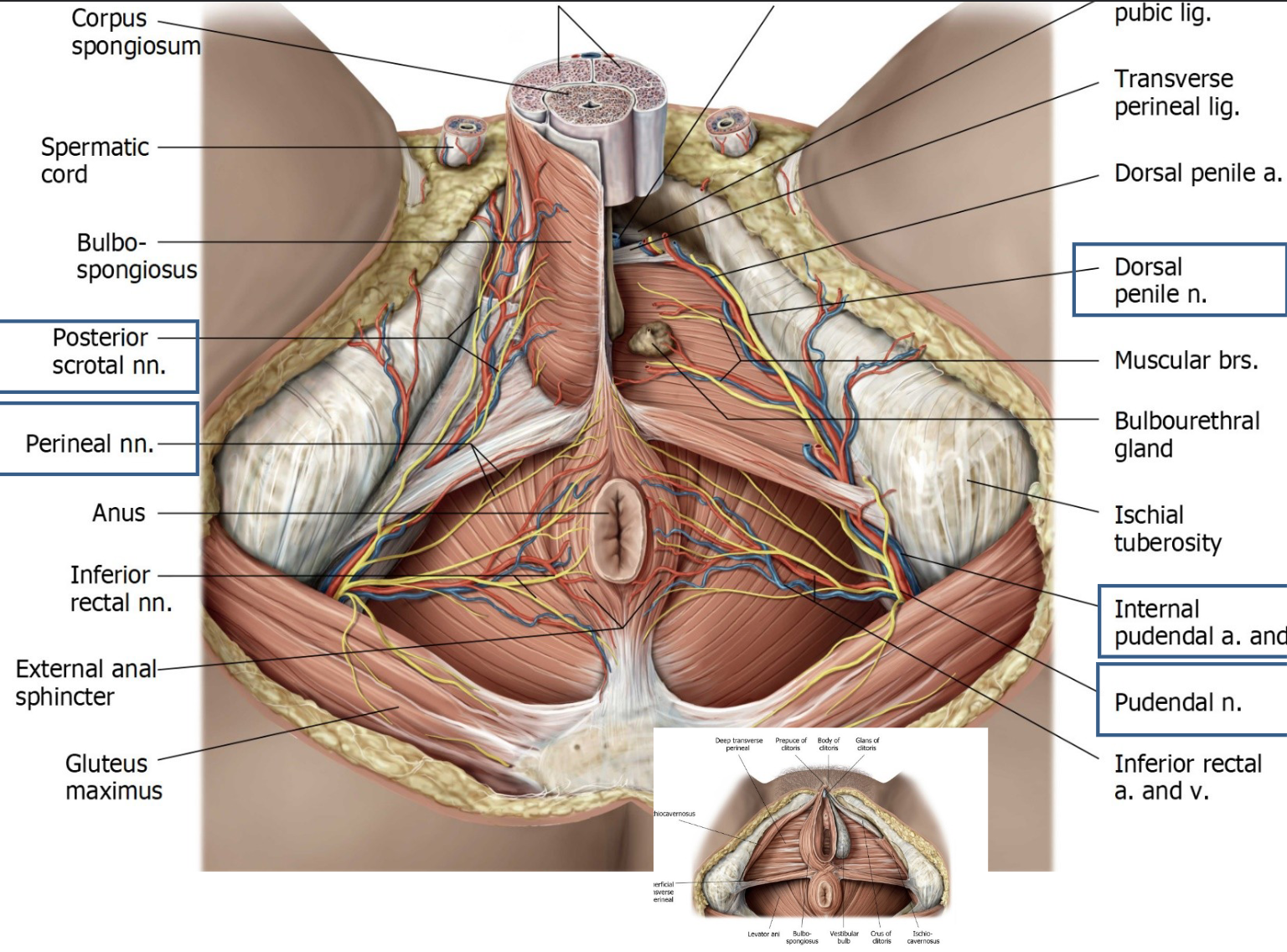
Summary
Knowledge of anatomical structures is essential for clinical applications, particularly relating to reproduction and urinary functions.
Understanding of neural control is crucial for recognizing physiological events such as erection and ejaculation.
Anatomy study integrates blood supply, nerve supply, and muscle functions pertaining to male and female reproductive systems.